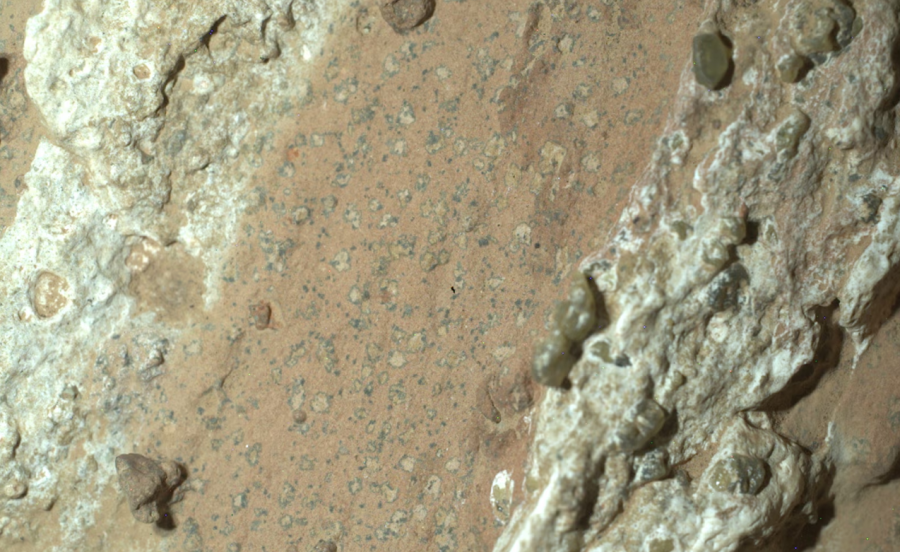One of the most terrifying elements of the search for alien life is the observation by NASA’s Perseverance rover on a rock on Mars. Morphological evidence suggests that the rock in question may have once harbored microbial life.
The “Red Planet” currently represents the biggest challenge in space exploration, as the US space agency aims to send the first humans in the late 2030s.
Analysis of the roughly 0.7-square-meter rock revealed traces of organic material and surface stains similar to those associated with fossilized microbes on Earth, suggesting that Mars could have hosted life billions of years ago.
According to scientists, the rock was also in contact with water, when water was still flowing at the northern edge of the Neretva Valice region and in the Jezero Crater on Mars.

“It’s the most mysterious, complex and potentially important rock that Perseverance has ever examined,” said Ken Farley, mission scientist at the California Institute of Technology, adding:
“On the one hand, we have the first confirmed detection of organic matter, the distinctive colored spots that indicate chemical reactions that microbial life could use as an energy source, and clear evidence that water, essential for life, once flowed through the rocks.”
“On the other hand, we could not determine exactly how the rocks formed and to what extent nearby rocks might have heated up and contributed to these features.”
In its ancient past, Mars was a warmer, wetter planet. If life ever evolved there, researchers believe traces of it would have remained in its rocks, in the form of organic matter and perhaps fossils. It is currently impossible to retain liquid water on its surface, but scientists estimate that some reserves may still exist beneath its polar regions.
{https://www.youtube.com/watch?v=I7v_xuCDwnM}
Scientists now want to bring samples back to Earth for a more comprehensive examination, but NASA’s plans have already run into a number of difficulties. The current mission, as The Guardian reports, has already cost more than $11 billion and is plagued by long delays, so it is not expected to be completed before 2040.
“The reality is we need to bring these samples back to Earth for detailed electron microscopy and radioisotope analysis to test whether they were formed by some ancient microbial process,” said John Bridge, a professor and researcher at the University of Leicester in NASA’s Mars Science Program laboratory mission.
“While these features do not provide clear evidence for life, they do confirm that Mars was a very dynamic planet with all the ingredients for life, including organic carbon,” said Professor Charles Cockell, an astrobiologist at the University of Edinburgh. “We need to bring back samples, or better yet, send people to see if there are any traces of life.”

“This is a really amazing rock,” said Professor Monica Grandi, a scientist at the Open University. “I’m just ecstatic to look at it. The combination of different types of minerals arranged in a way that is reminiscent of ancient terrestrial rocks on Earth, where traces of burrowing microbes are preserved, is amazing. I’m obviously not saying there are microbes on Mars, but I’m looking forward to seeing what else Perseverance uncovers in this part of its exploration.”







More Stories
Is this what the PS5 Pro will look like? (Image)
Finally, Windows 11 24H2 update significantly boosts AMD Ryzen – Windows 11 performance
Heart Surgeon Reveals The 4 Things He ‘Totally Avoids’ In His Life